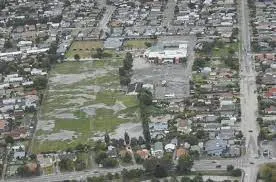Definition: Cyclic Resistance Ratio (CRR) & Standard Penetration Test (SPT-N) Earthquake liquefaction potential refers to the likelihood of soil undergoing a transformation from a solid to a liquid state during an earthquake. This can have devastating consequences, causing buildings to sink, underground utilities to rupture, and landslides.
Click the Translate button(see right) on this post to set your Own Language to understand more perfectly!!
Earthquake Liquefaction Potential Calculator
Results
Definition Continue:
Earthquake Liquefaction Potential: Cyclic Resistance Ratio (CRR) & Standard Penetration Test (SPT-N) Earthquake liquefaction potential refers to the likelihood of soil undergoing a transformation from a solid to a liquid state during an earthquake. This can have devastating consequences, causing buildings to sink, underground utilities to rupture, and landslides.
Assessing Liquefaction Potential:
Geotechnical engineers evaluate liquefaction potential by comparing the soil's cyclic resistance ratio (CRR), its inherent ability to resist liquefaction, with the cyclic stress ratio (CSR), the stress imposed by the earthquake shaking.
Standard Penetration Test (SPT-N):
The SPT-N value is a crucial parameter obtained from a field test that measures the number of blows needed to drive a standard sampler a specific depth into the ground. Higher SPT-N values indicate denser and more resistant soils.
Equation:
While the actual calculations can be complex, a simplified relationship between CRR and SPT-N can be expressed as:
CRR = f(SPT-N)
where 'f' is a function that considers various factors like overburden pressure, earthquake magnitude, and fines content in the soil. Several correlations exist to determine CRR from SPT-N, but they should be used with caution and by qualified professionals.
Example:
Imagine a soil layer with an SPT-N value of 20. Based on a specific design procedure and correlations, the engineer calculates a CRR of 0.6. If the calculated CSR for the anticipated earthquake shaking is 0.5, the factor of safety (CRR/CSR) is 1.2, indicating a low liquefaction potential for this scenario.
Real-Life Use:
Land-use planning: Knowing liquefaction susceptibility helps authorities guide development away from high-risk zones or implement mitigation measures like ground improvement techniques.
Earthquake-resistant design: Engineers consider liquefaction potential when designing structures in earthquake-prone areas. They may employ foundation strengthening methods or choose alternative locations with lower risk.
Post-earthquake assessment: Evaluating liquefaction potential after an earthquake helps assess damage and plan reconstruction efforts
How to Earn Money using the knowledge of Earthquake liquefaction potential calculation in our real Life????
Your knowledge of earthquake liquefaction potential calculations can be a valuable asset in several ways to earn money:
Consulting Services:
Geotechnical Engineering Firms: Offer your expertise to geotechnical firms that conduct soil investigations and foundation design for construction projects in earthquake-prone areas. You can assist with liquefaction assessments, data analysis, and report preparation.
Independent Consultant: With relevant qualifications and experience, you could establish yourself as an independent consultant, providing liquefaction assessment services directly to architects, developers, and homeowners in high-risk zones.
Risk Assessment and Mitigation:
Liquefaction Mitigation Companies: Specialize in ground improvement techniques to reduce liquefaction risk. Your knowledge can be valuable in designing mitigation strategies, estimating project costs, and creating proposals for clients.
Insurance Companies: Liquefaction can be a significant factor in earthquake insurance policies. Your expertise can be used to evaluate property risk for insurance companies, helping them set appropriate rates and develop risk mitigation strategies for their clients.
Training and Education:
Develop Training Courses: There's a constant need for education and training in earthquake engineering. You can create and deliver courses on liquefaction assessment for engineers, architects, and construction professionals.
Write Educational Materials: Develop informative materials like ebooks, articles, or online courses explaining liquefaction potential and mitigation strategies for homeowners and the general public.
Additional Considerations:
Formal Qualifications: While a strong understanding of liquefaction calculations is valuable, formal qualifications in geotechnical engineering or a related field will significantly enhance your credibility and earning potential.
Networking: Build relationships with professionals in the construction, engineering, and insurance industries to increase your visibility and attract potential clients.
Location: Focus your efforts on regions with high earthquake risk where liquefaction is a major concern.
Remember, the key to success lies in effectively communicating your expertise and its value proposition to potential clients.
Do YOU Want To Earn Money In Various Ways, Click The Link & Explore Your Field of Interest!!!









No comments:
Post a Comment